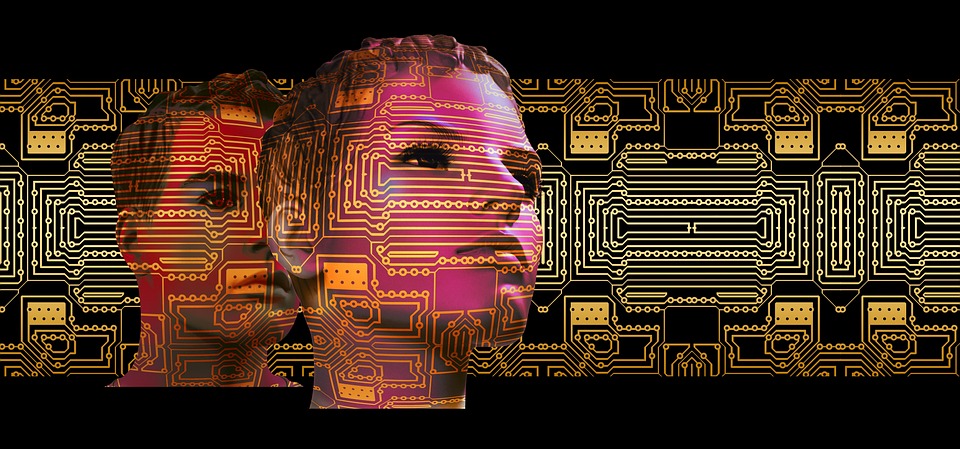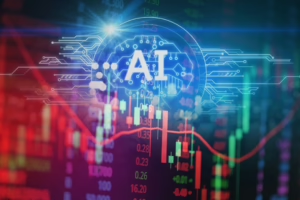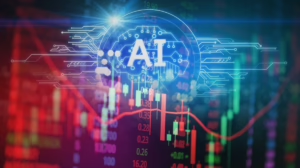The Intersection of AI and Cybersecurity: Protecting Data in a Digital World
In today’s hyper-connected digital landscape, cybersecurity has become a pressing concern for organizations of all sizes. With the increasing prevalence of cyberattacks, data breaches, and unauthorized access, the need for robust security measures has never been greater. Enter artificial intelligence (AI), a powerful ally that holds the potential to revolutionize the way we protect data and secure digital environments. This article explores the intersection of AI and cybersecurity, highlighting innovative applications, challenges, and future trends.
The Rising Threat Landscape
Cybercriminals have become increasingly sophisticated, employing advanced techniques to exploit vulnerabilities in systems. The rise of ransomware, phishing schemes, and data exfiltration underscores the necessity for organizations to adopt proactive approaches to cybersecurity. Traditional security measures, while effective to a degree, often struggle to keep pace with the evolving tactics employed by malicious actors. According to cybersecurity research, there has been a sharp rise in attacks, with ransomware incidents increasing by 150% in 2021 alone. This alarming trend highlights the urgent need for innovative and adaptive security solutions.
AI: A Game Changer in Cybersecurity
1. Threat Detection and Response
AI algorithms can analyze vast amounts of data at incredible speeds, identifying patterns that might go unnoticed by human analysts. Machine learning (ML) models, trained on historical attack data, can recognize anomalies and potential threats in real-time. This capability enables quicker detection and response to incidents, significantly minimizing damage and reducing response times. For example, security systems powered by AI can automatically flag suspicious network traffic or unauthorized access attempts, ensuring that organizations can mitigate potential breaches almost instantly.
2. Predictive Analytics
AI can not only react to current threats but also predict future attacks by analyzing trends and behaviors. Predictive analytics helps identify potential vulnerabilities before they can be exploited, allowing organizations to pre-emptively strengthen their defenses. This forward-thinking approach to security drastically shifts the paradigm from reacting to threats after they occur to actively anticipating and mitigating risks before they become issues.
3. Behavioral Biometrics
User authentication has traditionally relied on passwords, a method that can be easily compromised. AI can enhance security through behavioral biometrics, which analyze patterns in user behavior—such as typing speed, mouse movements, and navigation paths—to authenticate users. This adds an additional layer of security, making it harder for unauthorized individuals to access sensitive information. For instance, if a user suddenly exhibits a typing pattern that significantly deviates from their norm, the system can flag this anomaly and potentially deny access or require additional verification.
4. Automated Threat Hunting
AI-powered tools can automate the threat-hunting process, allowing cybersecurity teams to focus on strategic initiatives rather than routine tasks. Automated systems can scour networks for signs of breaches, freeing up precious human resources to act on findings rather than spend time searching for them. By prioritizing alerts generated by AI systems, human analysts can devote their attention to more complex tasks that require nuanced decision-making.
Challenges in Implementing AI in Cybersecurity
While AI offers transformative potential, there are challenges that organizations must navigate when integrating it into their cybersecurity strategies.
1. Data Privacy Concerns
The use of AI in cybersecurity often involves the analysis of large datasets, including personal information. Organizations must ensure that their AI systems comply with data protection regulations and best practices, necessitating a careful balance between robust security and privacy. GDPR, HIPAA, and other regulations impose strict requirements on how data is collected, processed, and stored. Organizations must tread carefully to avoid legal repercussions while harnessing the power of AI.
2. False Positives
AI systems can sometimes yield false positives—flagging benign activities as potential threats. This can lead to alert fatigue among cybersecurity teams, resulting in important threats being overlooked. Continuous improvement of AI algorithms is essential to minimize these inaccuracies. Fine-tuning models and incorporating feedback loops can help refine AI systems to enhance their accuracy and reliability.
3. Adversarial Attacks on AI
Just as AI can be used to bolster cybersecurity, it can also be exploited by cybercriminals. Adversarial attacks—where attackers manipulate AI models to produce incorrect outputs—pose a significant threat to AI-driven security systems. These attacks can trick algorithms into making errors, thereby compromising the overall security landscape. Ongoing research and development are crucial to build more resilient AI frameworks that can withstand such manipulation.
Future Trends: AI in Cybersecurity
As technology continues to evolve, the synergy between AI and cybersecurity is poised to grow.
1. AI-Driven Security Orchestration
The future will witness an increase in AI systems that not only detect threats but also orchestrate comprehensive responses involving various security layers, enhancing overall security posture. These systems will integrate threat intelligence, incident response, and remediation processes seamlessly, allowing organizations to respond to threats more efficiently.
2. Human-Machine Collaboration
The best cybersecurity strategies will likely involve a combination of human intuition and AI technology. Collaboration between AI systems and human analysts will lead to holistic security solutions that leverage the strengths of both. While AI excels at processing vast datasets and identifying patterns, human expertise is invaluable for contextualizing threats and making informed decisions.
3. Continuous Learning
AI systems will adopt adaptive learning techniques, refining their models based on new data, thus staying ahead of the malicious tactics employed by cybercriminals. These systems will learn not just from past attacks but also from near misses and evolving patterns in user behavior. This continuous learning process will enhance the ability of AI to foresee potential breaches and act proactively.
4. Zero Trust Architecture
As organizations adopt zero trust principles, AI will play a central role in continuously verifying every access request, ensuring that only trusted users gain access to critical resources. In a zero trust model, trust is never assumed; instead, every user and device is verified before being allowed access. AI can streamline this process by quickly analyzing authentication requests in real-time, ensuring that only legitimate users can interact with sensitive data.
Conclusion
The intersection of AI and cybersecurity presents both remarkable opportunities and significant challenges. As organizations increasingly turn to AI-driven solutions to enhance their security strategies, it is essential to approach these technologies thoughtfully, with a keen awareness of their limitations and ethical implications. By harnessing the power of AI, businesses can fortify their defenses in an ever-evolving digital world, safeguarding sensitive data and maintaining trust in their operations.
The journey ahead may be fraught with challenges, but with AI by our side, the future of cybersecurity looks promising. As AI continues to evolve, its integration into cybersecurity frameworks holds the potential to create a safer digital environment for all, where organizations can operate confidently, knowing that their data is secure against the evolving threat landscape.


























Add Comment